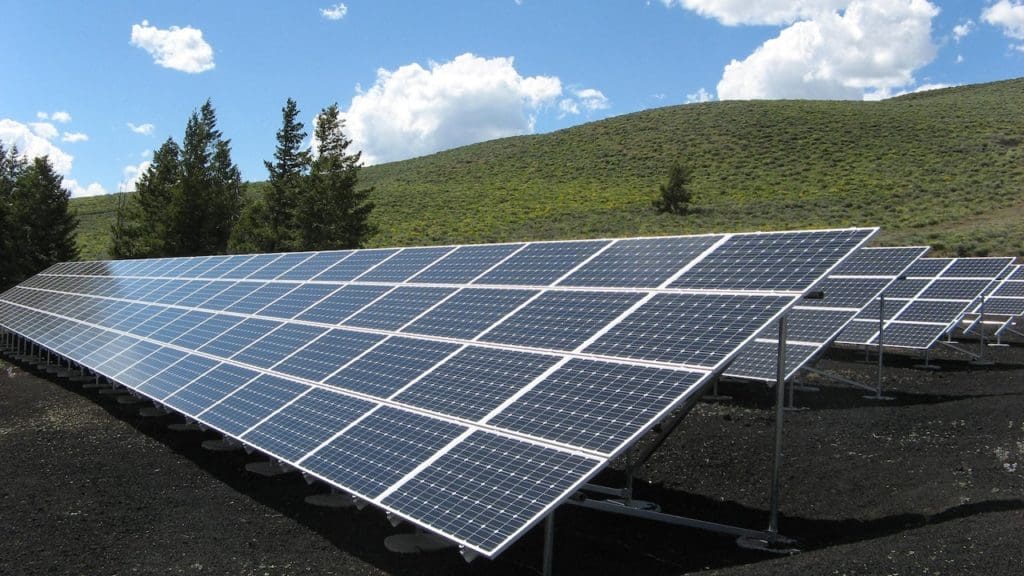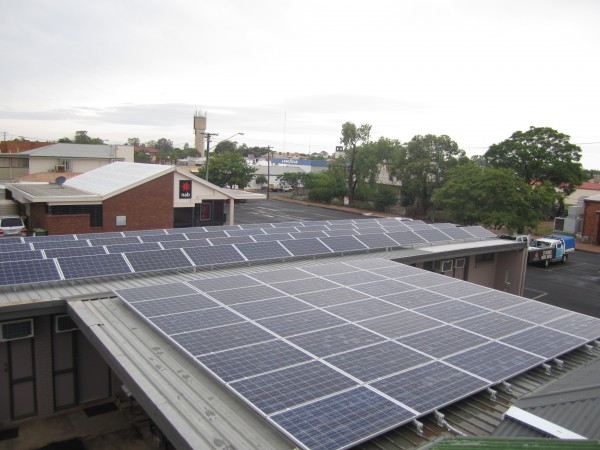Solar panel tilt angle and orientation are two of the most important factors in determining how much electricity your solar panel array will generate. If you live in Australia and have a grid-connected solar system, your solar panels will be installed at the angle and aspect of your roof. In most cases – provided you have an unshaded, north or east & west-facing roof (depending on location) that is has some incline – this is the most economical approach, and your solar power yield will not be significantly less than if the panels were installed at the ‘perfect’ angle and orientation. But what should you do if you have a flat roof? Is it ever worth it to have your solar panels installed horizontally?
To tilt or not to tilt: Solar panels on a flat roof
Installing your solar panels at the ideal tilt angle and orientation for your latitude ensures that your system generates as much electricity as possible for your location. The ideal orientation for a solar panel array is due north, and the ideal tilt angle is the angle of your latitude (e.g. about 30 degrees in Sydney and Perth). Small variations away from these ideals will not result in a significant difference in the power output of your solar energy system, which is why the natural tilt angle of your roof is usually fine (and keeping that tilt frames can add significantly to the cost of your system, putting a damper on the value of the solar power it produces).
Solar panels installed horizontally on a roof at the St George Hotel in St George, QLD.
In the past, panel manufacturers would not offer warranties on panels installed at an angle lower than 2 degrees, but these days most of the top manufacturers will give warranties even if their panels are installed at 0 degrees (completely flat).
However, industry best practice in Australia is to ensure that panels are at least slightly tilted – so that the panels can better ‘self clean’ when it rains. It’s also worth noting that many roofs naturally have some degree of tilt – aluminium roofs, for example, usually have a pitch of about 3-4 degrees. Concrete or membrane roofs are the most common roofs that are truly horizontal – in which cases a tilt or ballast system is frequently used to give the panels at least a 10-degree pitch.
If the roof is truly flat, there are a limited number of situations in which installing your panels horizontally (or nearly horizontally) might be worth it for you. These are:
- If the building on which you are installing the panels is located in the tropics – under about 23 degrees of latitude. This is because the sun’s movements through the tropical sky mean that the sun may actually be to the south of your roof during the summer months (late December – late March in the southern hemisphere). By contrast, the midday sun never goes south of a system located above 23 degrees latitude. If you are in the tropics, the closer to the equator that your system is, the more time the sun will spend ‘behind’ your roof. If your panels are laid horizontally (or close to it), the more of this winter sun you’ll be able to catch. (That being said, a slight pitch is still preferable to avoid dust accumulation.)
- If you have limited roof space. Even if you’re not in the tropics, it may still make sense to install your panels horizontally if your roof is flat as opposed to paying more for tilt frames. Interestingly, the efficiency reduction in laying your panels flat in Sydney (instead of north-facing at a 33-degree angle, which would be ideal) is about 10-12%, while installing tilt frames could increase the cost of your system by about the same percentage. Make sure you do the maths before you make a decision – the higher your latitude (for example, if you live in Tasmania), the more likely tilt frames will be worth your while.
A note about dust accumulation on flat solar panel arrays
One other thing to keep in mind if your panels are horizontal is that they will not self-clean as effectively as panels at a tilt – dust has a higher chance of accumulating and impeding electricity production. The drop in performance due to dust accumulation on panels is roughly between 5% and 10%. On the other hand, solar panel arrays tilted at an angle – even a slight angle – are more likely to be washed clean when it rains.
- The Top 5 Problems With Cheap Air Conditioning Quotes - 12 January, 2026
- APsystems Battery Review: An Independent Assessment by Solar Choice - 18 December, 2025
- Running Cost of Air Conditioners – Explained - 7 October, 2025


Great article! It definitely depends on the location and surroundings of the house. Solar power is fruitful only when the cost of production is lower than traditional electricity costs. In some areas, this is not possible.
Having solar panels tilted would also reduce the impact of hail as against a flat installation.
Hi,
I have a small solar project going, I’m going to put panels on a travel trailer. How much efficiency will I lose by mounting them flat? A tilt kit would involve climbing on the roof way more often than I’m comfortable with.
Thanks.
Hi Scotty,
I’d say that in balance you’re probably better off leaving them flat. You can play with efficiency losses as you change the tilt angle with the PVWatts calculator (free to use), but also keep in mind that if your trailer is constantly mobile the direction of the panels will change all the time anyhow – in which case flat would be your safest all-around bet.
Hope this helps.
Best,
James